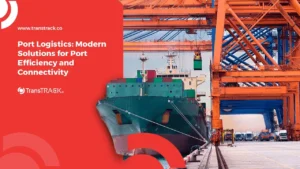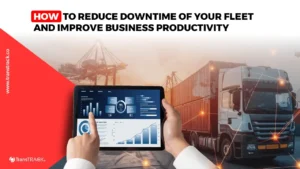3 Tips for Choosing a Good Backhoe Loader and its Price!
Posted on July 10, 2024 by Nur Wachda Mihmidati

Backhoe loader are one of the most versatile and widely used machines in the construction and excavation industry. With the ability to dig, lift, and move materials, they are the top choice for professionals who need efficiency and flexibility in the field. In this article TransTRACK, we will explore the different aspects of backhoe loaders, including their functions, main parts, and tips on choosing the right one for your project!
What is the function of a backhoe loader?
The functions of this machine include:
Excavation
The backhoe loader is equipped with a digging arm that can rotate and move back and forth. This allows it to dig holes, trenches and channels with accuracy. The digger part is usually used for:
- Creating building foundations.
- Digging sewers or irrigation channels.
- Retrieving soil in hard-to-reach areas.
Lifting
The front loader section is designed to lift and move heavy materials. These functions include:
- Lifting loads such as soil, sand, gravel and other construction materials.
- Moving materials from one location to another within the work area.
- Assist in cleaning the work area of debris or unnecessary materials.
Leveling and Structuring
Backhoe loaders are also useful for leveling and stacking materials. This includes:
- Leveling the ground before construction.
- Backfill certain areas with excavated material.
- Contour the ground according to the project plan.
Road Construction
In road construction or repair projects, this machine can:
- Excavate and level the road for asphalt or concrete overlays.
- Assisting in the removal of unnecessary soil material.
- Lifting construction materials for road infrastructure development.
General Construction Work
Backhoe loaders are versatile tools on construction sites, used for:
- Moving building materials such as bricks, concrete, and wood.
- Providing support for other heavy equipment by cleaning the work area.
- Digging holes for pipes, cables, and other installations.
Agricultural Work
In the agricultural sector, this heavy equipment can be used for:
- Digging soil for planting.
- Transferring fertilizers or organic matter.
- Assist in the maintenance of farmland.
What are the main parts of a backhoe loader?
Here are the main parts of this machine and their functions:
Loader Bucket
The loader bucket is the front part of the backhoe loader used for lifting and moving materials. With various sizes, the bucket is designed for efficiency in transporting soil, sand and other building materials.
Backhoe
The backhoe is located at the rear and functions as a digger, allowing for deeper and more precise digging work. This part is especially effective for creating trenches, holes, and channels for pipes or cables.
Operator’s Cabin
The cab is the space where the operator controls the machine, designed to provide comfort and safety. Equipped with intuitive controls and instrument panels, modern cabs often have additional features to enhance the working experience.
Chassis
The chassis is the main structure that supports all components of the machine, providing stability and strength. Made of strong materials, the chassis is designed to withstand heavy loads and strain during operation.
Wheels or Tracks
Wheels or tracks serve to give the backhoe loader mobility on various terrains. Wheels are suitable for hard surfaces, while tracks provide better stability on soft or uneven ground.
Boom
The boom is a long arm that connects the digger section with the cab, allowing vertical movement. This provides greater reach to dig and move materials efficiently.
Arm
The arm connects the bucket to the boom and allows the bucket to move forward and backward. This design increases flexibility in digging, making it easier to adjust the bucket position.
Stabilizer
The stabilizer is a support leg that is lowered when the machine is in operation, providing additional stability. This is important to prevent overturning when working on uneven terrain.
Hydraulic System
The hydraulic system powers all moving components of the backhoe loader. With high efficiency, it provides the power needed to lift, dig and move materials.
Engine
The engine is the power source of the machine, usually a diesel engine. Modern engines are designed for fuel efficiency and equipped with technology that improves performance and durability.
How to choose a good backhoe loader?
Here is how to choose a good backhoe loader:
Adjust to the Type of Project
Before choosing a backhoe loader, it is important to consider the type of project that will be undertaken. Make sure that it suits the specific needs of the project, such as the depth of excavation, the type of material, and the size of the work area.
Pay Attention to Engine Capacity and Power
Check the digging capacity and lifting power of the engine to ensure the backhoe loader can handle the required load. A powerful and efficient machine will increase productivity and reduce project completion time.
Ensure Spare Parts Availability and After Sales Service
Choose a brand or model that has good spare parts availability and reliable after-sales service. This will help keep the machine in optimal condition and reduce downtime due to breakdowns or maintenance.
How much does a backhoe loader cost?
The price of a backhoe loader varies depending on the brand, model, size and features. In general, prices for new backhoe loaders can range from $30,000 to $100,000 or more. Used models are usually cheaper, with prices ranging from $15,000 to $50,000, depending on the condition and year of manufacture. In addition, additional costs such as spare parts and maintenance also need to be considered.
Backhoe loaders are very important machines in various construction and excavation projects. Choosing the right backhoe loader can improve your work efficiency and productivity. To maximize the use of your machines, consider integrating TransTRACK’s Fleet Management System. With this system, you can monitor and manage your machine fleet in real-time, improve operational efficiency, and reduce maintenance costs. Contact us today for more information and improve your project performance!
Recent Post
Topic :
 Bahasa Indonesia
Bahasa Indonesia









